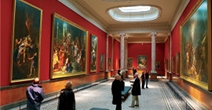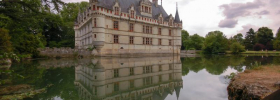 Home
Home- > Tours
- > Rhône-Alpes
- > Rhône
- > Lyon
- > Lyon's neighborhoods
Lyon's neighborhoods
| Topic | Walks |
| Departure | LYON (69) |
| Details | Strolling about the different quarters of the city, you find yourself transported into any number of historical eras. |
The roman vestiges

The most ancient vestige of Roman urbanization and evidence of Lyon's power in the Gallo-Roman period is Fourvière Hill, with its Roman theater, the Temple of Cybele and the Odeum. Lyon is, in fact, the only city in France with a permanent archeological dig.
Accommodation nearby
The basilica of fourvière and the "praying hill"
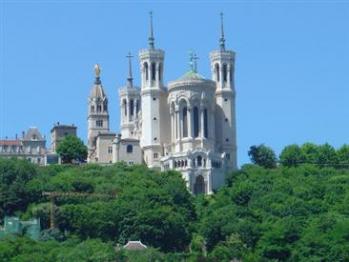
A symbol of Lyon's devotion in the 19th century: the Basilica of Fourvière Going from what Michelet called the "praying hill" The Fourvière and Saint Just districts are part of the area classified as a UNESCO World Heritage site in 1998.It is on Fourvière Hill that you will find vestiges of the Roman city in an archeological site covering a vast area. An archeological park encompasses a large portion of the site. Starting in the 6th and especially the 7th century, numerous religious congregations began setting up edifices on the slopes of Fourvière, hence its reputation as "the praying hill". The district still bears evidence of the strong presence of the religious orders.
Accommodation nearby
The croix-rousse
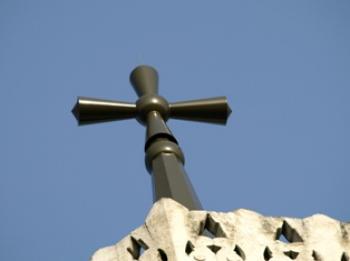
the "working hill" of the Croix-Rousse, we leap into the history of 19th century labor. Here we find high-ceilinged buildings adapted to the weaving looms of the Canuts silk workers. During the same period, the city spread to the other side of the Rhone and built up the left bank area with its sumptuous Haussmanian buildings Development continued incessantly to the east, especially with the coming of industry, which has left scars to this day (vast empty lots in the 7th and 8th districts) but which also spawned interesting worker neighborhoods (quarters such as Mermoz and the Etats-Unis by Tony Garnier, the Cité Jardin in Gerland).
Accommodation nearby
Old lyon
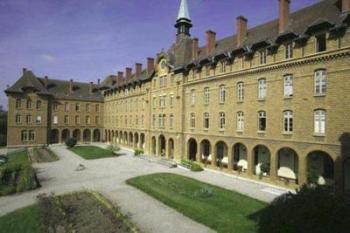
Crossing the other river, the Saône, we come to the prestigious Renaissance legacy whose Florentine inspiration and colors dominate Vieux-Lyon (Saint Jean, Saint Georges and Saint Paul quarters). Since 1964, Vieux Lyon became the first protected historic district in France. It is one of the largest Renaissance quarters in Europe and was named a UNESCO World Heritage site in 1998.
The Vieux Lyon quarter spreads across the Fourvière hillside and is organized around three religious monuments:
- Saint Jean cathedral, the oldest of the three, and which still has its medieval apse, is a fine example of the Gothic art tradition. Of special interest are the remarkable astronomic clock and the impressive central stained glass rose window. The chapel of the Bourbons was built later, in the 15th century.
- The splendid medieval church of Saint Paul with its octagonal bell tower, its frescoes of musician angels dated 1480 and its excellent acoustics make it a charming venue for concerts.
- Saint Georges church, built in the 19th century by Bossan, the architect of Fourvière basilica. The surrounding homes date back to the Middle Ages and were extended and embellished in the 16th and 17th centuries.
Accommodation nearby
The presqu'île
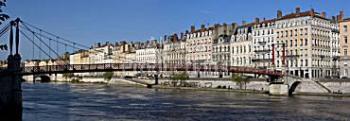
Between the two rivers, the Presqu'île peninsula is a concentration of all periods, from the vestiges of the very religious Middle Ages (Saint Martin d'Ainay Abbey, Saint Nizier Church) to the typically 19th century avenues (now known as Rue de la République and Rue Edouard Herriot), and by way of a few Renaissance streets and the monumental constructions of the classical era (Hôtel Dieu, City Hall, Museum of Fine Arts), Not forgetting, of course, the new contemporary monuments which symbolize Lyon's development.
Accommodation nearby
Modern architecture
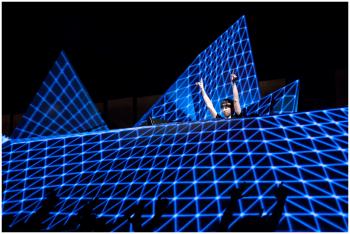
The physiognomy of the various quarters continues to evolve as the architectural history of Lyon moves into the 21st century: Jean Nouvel and Yann Kersalé designed an audacious renovation of the Opera House; Renzo Piano built a Cité Internationale of warm red brick between the cool blue of the Rhone and the bright green of the Tête d'Or Park; out of Santiago Calatrava's imagination came a railway station in the form of a butterfly at Lyon Saint-Exupéry airport, while the new Lycée international by Jourda and Perraudin winds through Gerland, like a giant glass snake.
Accommodation nearby
Gerland

The 19th century dyking of the Rhone river and the draining of the zone's swamplands made a large terrain available to small craft industries and, later, to important manufacturing sites. Rapid expansion came in the 20th century with the arrival of the chemical and food industries established near the river and with the creation of the Edouard Herriot Port. As a result, numerous housing projects were constructed for the laborers employed by the companies in the area. The hall constructed by Tony Garnier ; The development plans for Gerland are meant to give a coherent urban structure to the large sites available in the quarter, with a preference for high-tech industries. Restructuring plans are organized around four zones: the neighborhood of the Ecole Normale Supérieure, built in 1987 with 700 students, teachers and researchers the Tony Garnier science park for high technology industries in the scientific and bio-technology sectors - the reclaiming of the Rhone riverbank and the development of Gerland Park. the yachting basin area with a 5 hectare (12.5 acre) park and new port. The International School (2000 students) has contributed since 1992 to the image of Lyon as a city with an educational system capable of catering for the children of expatriate employees.
Accommodation nearby
Latest news on : Lyon's neighborhoods
Tourism near
 Visit the city of Lyon
Visit the city of Lyon - 10 Museum
- 3 Monuments
Tours
 Tour to explore Lyon
Tour to explore Lyon
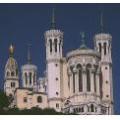 Lyon world heritage
Lyon world heritage
 The tourist sites in the Rhône department
The tourist sites in the Rhône department






















